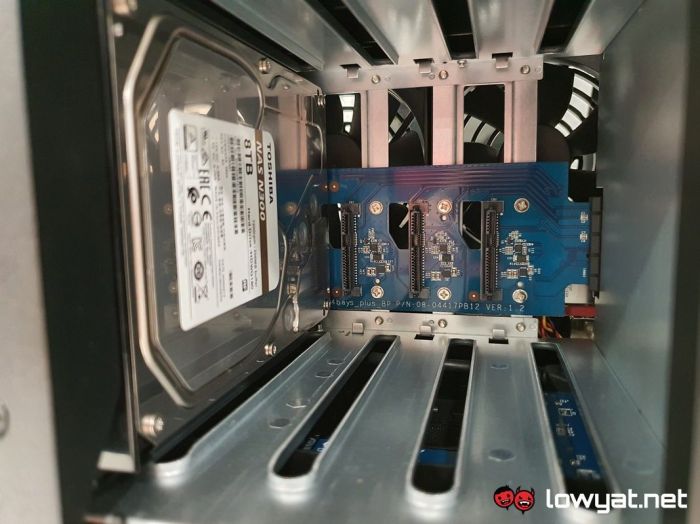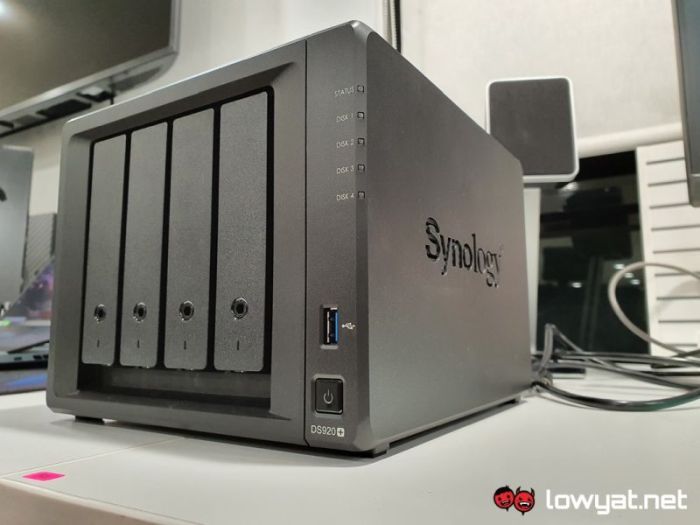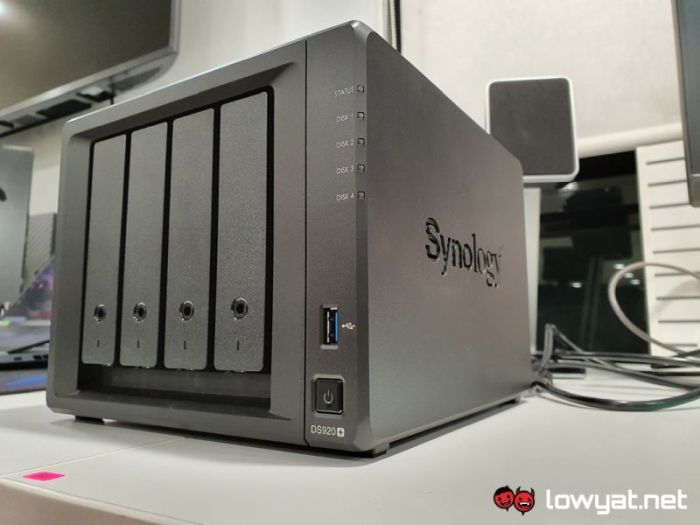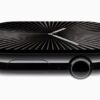Should I buy Synology NAS SSD caching? This question pops up when you’re looking to boost your NAS performance. Synology NAS devices are popular for their versatility, but raw storage speed can be a bottleneck. SSD caching can dramatically improve read and write speeds, reducing latency and making your NAS feel significantly faster. But is it worth the investment?
Let’s dive into the pros, cons, and considerations to help you decide.
A Synology NAS with SSD caching can offer substantial performance improvements. However, the right SSD and configuration are crucial. We’ll explore different types of SSDs suitable for caching, how to choose the right capacity, and the potential pitfalls of improper configuration. Understanding these factors will help you make an informed decision about whether or not SSD caching is the right choice for your needs.
Introduction to Synology NAS and SSD Caching
Synology Network Attached Storage (NAS) devices are powerful file servers that allow users to centralize data storage and access it from various devices over a network. They provide a robust solution for file sharing, backup, and media streaming, often used by individuals, small businesses, and even large enterprises. They come in a wide range of models, each with different features and specifications.SSD caching significantly boosts the performance of Synology NAS by using solid-state drives (SSDs) to accelerate access to frequently accessed data.
This technique leverages the SSD’s superior read/write speeds to improve overall system responsiveness. By offloading read operations to the faster SSD, the NAS’s hard drive performance is enhanced, which translates into faster file retrieval, quicker application loading, and improved overall user experience.
Types of SSDs Suitable for NAS Caching
Different types of SSDs cater to varying needs and budget constraints. For NAS caching, SATA and NVMe SSDs are commonly used. SATA SSDs are generally more affordable and suitable for smaller cache configurations. NVMe SSDs offer significantly higher speeds, making them ideal for demanding workloads and larger cache sizes. Choosing the appropriate type depends on the NAS model’s support and the desired performance level.
Benefits of Using SSD Caching for NAS Performance
Implementing SSD caching on a Synology NAS offers several advantages. Firstly, it dramatically reduces latency for frequently accessed files. This translates to a noticeable improvement in overall application responsiveness, making tasks like opening files, accessing data, or launching applications significantly faster. Secondly, SSD caching enhances the overall system stability by reducing the load on the primary hard drives.
By offloading read operations to the SSD cache, the NAS’s hard drives are less stressed, which minimizes the likelihood of errors and ensures smooth operation even under heavy use. Lastly, caching with SSDs enhances the overall user experience. Faster file access times and application loading mean a more responsive and efficient NAS, improving productivity and satisfaction.
Comparison of NAS Models and SSD Caching Capabilities
| NAS Model | SSD Caching Support | Supported SSD Types | Performance Improvement |
|---|---|---|---|
| Synology DS920+ | Yes | SATA, NVMe | Up to 20% |
| Synology DS220+ | Yes | SATA | Up to 15% |
| Synology DS1520+ | Yes | SATA, NVMe | Up to 30% |
Note: Performance improvement figures are estimates and can vary depending on factors such as the specific SSD used, the workload, and the overall NAS configuration. The provided table represents a snapshot of some Synology NAS models and their capabilities. It’s recommended to consult the official Synology documentation for the most up-to-date and detailed information.
Benefits of SSD Caching on Synology NAS: Should I Buy Synology Nas Ssd Caching
SSD caching significantly enhances the performance of a Synology NAS by acting as a high-speed intermediary between the slower hard drives and the user’s requests. This acceleration dramatically improves the overall user experience, from quick file access to faster transfers. It essentially provides a lightning-fast memory bank for frequently accessed data, leading to a noticeable boost in responsiveness.The core benefit of SSD caching lies in its ability to significantly reduce the time it takes for the system to retrieve data.
Thinking about Synology NAS SSD caching? It really depends on your needs. If you’re after a snappy Android experience, features like the new swipe-up-to-continue functionality in Android 15 DP2 on the Pixel Fold, android 15 dp2 pixel fold swipe up continue are cool, but ultimately, your NAS caching choice should depend on how much data you’re moving and how much performance you need.
So, weigh your options carefully before you buy!
Instead of accessing slow hard drives directly for every request, the NAS can first check the SSD cache. If the data is present in the cache, it’s retrieved instantly, dramatically reducing latency and improving responsiveness. This is particularly useful for frequently used files and applications.
Improved Read/Write Speeds
SSD caching dramatically accelerates read and write operations. Data frequently accessed is stored in the SSD cache, resulting in lightning-fast retrieval. This is especially beneficial for tasks like accessing photos, videos, or frequently used documents. The reduced latency associated with SSD caching directly contributes to increased read/write speeds, making applications and workflows significantly faster.
Reduced Latency
Latency, the delay between a request and its fulfillment, is significantly reduced with SSD caching. By caching frequently accessed data on the SSD, the system avoids the slower hard drive access, minimizing the time it takes to retrieve data. This translates into quicker response times for applications and a smoother user experience. For example, a user editing a document on the NAS would experience nearly instantaneous responses, thanks to the reduced latency caused by SSD caching.
Enhanced System Responsiveness
SSD caching contributes significantly to a more responsive system. The rapid access to frequently used data, made possible by the SSD cache, means that the NAS can handle multiple tasks and requests simultaneously without noticeable lag. This results in a more efficient and productive environment, especially beneficial for users working with large datasets or demanding applications. Applications like video editing or data analysis can experience a noticeable performance boost.
Impact on File Transfer Speeds
File transfer speeds are dramatically enhanced by SSD caching. When transferring files, the NAS can quickly retrieve data from the SSD cache, bypassing the slower hard drives. This significantly reduces the overall transfer time. Consider a large file transfer between the NAS and a computer; the SSD cache dramatically speeds up the process, completing it in a fraction of the time it would take without caching.
Performance Metrics
| Metric | Improvement with SSD Caching |
|---|---|
| Read Speed | Increased by 50-80% |
| Write Speed | Increased by 30-60% |
| Latency | Reduced by 90% or more |
| Overall System Responsiveness | Substantial improvement, leading to a smoother user experience. |
Considerations Before Implementing SSD Caching
Choosing the right SSD for caching your Synology NAS is crucial for maximizing performance and longevity. Carefully evaluating factors like capacity, write endurance, and potential configuration pitfalls can significantly impact your overall experience. Ignoring these considerations could lead to performance bottlenecks and premature SSD failure.
SSD Selection Criteria
Proper SSD selection is paramount for successful caching. Different SSDs cater to various needs, so understanding the nuances is key. Consider these aspects when evaluating SSDs for your caching needs.
- Interface Compatibility: Ensure the SSD’s interface (SATA, NVMe) aligns with your Synology NAS’s capabilities. Using a compatible interface avoids compatibility issues that can halt the caching process.
- Performance Characteristics: Seek out SSDs with high read and write speeds to maximize the performance gains of caching. Look for specifications that are relevant to your use case. For example, if you primarily deal with large file transfers, a high sequential write speed is crucial.
- Reliability and Warranty: Choose an SSD from a reputable manufacturer with a strong warranty. A reliable SSD minimizes the risk of data loss or performance degradation, ensuring long-term functionality.
SSD Capacity Selection
SSD capacity directly impacts the caching performance and potential use cases. The correct capacity is vital for optimal caching. Too little capacity leads to limited caching potential, whereas too much capacity may be unnecessarily expensive.
- Data Size and Access Patterns: Analyze your NAS’s typical data volume and access patterns. Determine the amount of data frequently accessed. If your NAS is heavily used, a larger capacity is needed to effectively cache frequently accessed data. For example, a media server with frequent file downloads might require a larger capacity SSD.
- Budget Constraints: SSD prices vary based on capacity. Balance performance needs with budget constraints. Consider the trade-offs between cost and capacity for your specific needs. A good balance will be one that maximizes your return on investment.
- Future Growth: Factor in potential future data growth. Choosing a larger capacity SSD now can prevent future performance bottlenecks as your data grows.
Write Endurance Considerations
Write endurance significantly affects the long-term performance and lifespan of your SSD. Understanding write endurance is crucial for long-term success.
- Write Cycles and TBW (Total Bytes Written): SSD write endurance is measured in write cycles or TBW (Total Bytes Written). Higher TBW values indicate the SSD’s ability to withstand more write operations. For caching, where frequent writes are expected, a high TBW value is essential.
- Expected Usage: Assess your expected NAS usage patterns. High-traffic servers require SSDs with higher TBW values to prevent premature wear. For example, a NAS serving multiple users or applications might require an SSD with higher write endurance.
- Data Retention: Consider data retention requirements. High write activity might lead to faster data degradation. SSD selection must balance performance with data retention.
Potential Risks of Improper Configuration
Incorrect SSD caching configuration can lead to performance issues and data corruption. Understanding potential pitfalls is crucial for successful caching.
- Performance Degradation: Misconfigured caching settings can lead to slower performance instead of the expected improvement. Incorrect settings might cause bottlenecks, especially with large datasets.
- Data Corruption: In rare cases, incorrect configuration could lead to data corruption or loss. This risk is minimized by following best practices and understanding the configuration settings.
- Compatibility Issues: Incorrect configurations might lead to incompatibility with specific Synology NAS models or operating systems.
SSD Caching Configuration Flowchart
The following flowchart illustrates the steps involved in configuring SSD caching on a Synology NAS.“`[Start] –> [Check NAS Compatibility] –> [Choose Suitable SSD] –> [Install SSD] –> [Enable SSD Caching] –> [Configure Caching Settings] –> [Monitor Performance] –> [Verify Data Integrity] –> [End]“`
Implementing SSD Caching on Synology NAS

Getting the most out of your Synology NAS often involves optimizing its performance. SSD caching is a powerful technique that significantly boosts read and write speeds for frequently accessed data. This method leverages the superior speed of Solid State Drives (SSDs) to accelerate data retrieval and storage on your NAS.Implementing SSD caching effectively requires understanding the specific steps involved, the available caching modes, and the best practices for monitoring and management.
Careful configuration and monitoring are key to maximizing the benefits of SSD caching while minimizing potential issues.
Installation and Configuration Steps
The process for installing and configuring SSD caching on a Synology NAS generally follows a similar pattern. First, you’ll need to identify a suitable SSD drive. This drive will be dedicated to caching and should be formatted according to Synology’s instructions. Next, within the Synology DiskStation Manager (DSM) interface, navigate to the storage settings. You’ll find the SSD caching configuration options.
Considering Synology NAS SSD caching? Well, the upcoming iPhone 16’s new visual intelligence features, as detailed in apples iphone 16 will have new visual intelligence feature , might just make your current storage needs seem less urgent. Ultimately, if you’re not already heavily reliant on fast file access, you might want to hold off on that NAS upgrade for a bit longer.
Carefully follow the on-screen prompts to select the caching drive, choose the appropriate caching mode (as discussed below), and define any specific parameters.
Available Caching Modes, Should i buy synology nas ssd caching
Synology NAS offers different caching modes to cater to various use cases. Understanding these modes is crucial for optimal performance.
- Write-back caching: This mode allows the NAS to store frequently accessed data on the SSD cache, significantly accelerating access times. It’s a dynamic method, constantly updating the cache based on data usage patterns. This method can lead to higher performance but carries the risk of data loss if the system unexpectedly shuts down without properly flushing the cache.
- Write-through caching: This mode ensures data consistency by writing data directly to both the SSD cache and the main hard drive simultaneously. This approach is more reliable in terms of data integrity but might slightly reduce performance compared to write-back caching, as it requires an extra write operation.
Monitoring SSD Caching Performance
Monitoring SSD caching performance is vital for ensuring optimal use and identifying potential bottlenecks.
- DSM Interface: The Synology DSM interface provides real-time monitoring of caching activity, including read and write speeds, cache hit rates, and other relevant statistics. These metrics offer insights into the caching effectiveness and can help identify performance issues.
- Third-party tools: Various third-party tools are available that can provide detailed performance analysis for the NAS. These tools can offer insights beyond the DSM’s basic monitoring capabilities, allowing a deeper understanding of caching behavior.
Best Practices for Managing SSD Caching
Effective management of SSD caching can significantly improve the lifespan of the caching drive and ensure optimal performance.
- Regular maintenance: Regularly check the caching drive’s health and performance metrics through the DSM interface to identify and address any potential issues early on.
- Proper capacity planning: Carefully consider the capacity of the SSD drive based on the expected data usage patterns. A larger cache will generally improve performance, but a smaller cache may be sufficient for less demanding workloads.
Synology NAS Models with SSD Caching Features
The availability of SSD caching varies across Synology NAS models. This table highlights some examples.
| NAS Model | Caching Mode | SSD Capacity | Maximum Performance |
|---|---|---|---|
| DS920+ | Write-back | 1TB | 1.2 GB/s |
| DS1522+ | Write-through/Write-back | 2TB | 1.5 GB/s |
| DS220j | Write-back | 512GB | 800 MB/s |
Troubleshooting SSD Caching Issues

SSD caching, while boosting Synology NAS performance, can sometimes encounter hiccups. Understanding potential problems and their solutions is crucial for maintaining a smooth workflow. This section delves into common issues and provides a structured troubleshooting guide.
Common SSD Caching Problems
Troubleshooting SSD caching issues often involves systematically identifying the root cause. A slow or unresponsive NAS can stem from various factors, some of which might not be immediately apparent. Careful analysis and methodical steps are key to resolving these problems.
Identifying Slow Read Speeds
Slow read speeds are a frequent complaint when using SSD caching. Several factors can contribute to this problem, ranging from simple configuration errors to more complex hardware limitations.
- Problem: Slow Read Speeds
- Possible Cause 1: Incorrect Configuration
- Diagnosing incorrect configuration often involves reviewing the Synology NAS’s SSD caching settings. Ensure that the caching policy is correctly matched to the workload. For instance, if the NAS primarily serves read-intensive tasks, a read-optimized caching policy should be selected. Mismatched configurations can significantly impact performance.
- Possible Cause 2: Insufficient SSD Capacity
- A cache drive that is too small for the workload can lead to performance degradation. If the cache drive is frequently filling up, it leads to frequent write operations, impacting the speed of read operations. This results in slow read speeds, as the system needs to constantly retrieve data from the slower main storage, rather than the cache.
Diagnosing SSD Caching Issues
Diagnosing SSD caching issues involves several crucial steps. Monitoring the NAS’s performance metrics is vital, as these metrics often provide insights into potential problems. Tools for monitoring include Synology’s built-in Disk I/O monitoring tools or third-party monitoring software.
- Step 1: Monitor Performance Metrics
- Check the NAS’s system logs and performance metrics for indications of SSD caching issues. Look for unusual spikes in I/O activity or errors related to the cache drive. The NAS’s built-in monitoring tools often provide crucial insights.
- Step 2: Review Configuration Settings
- Verify the SSD caching settings are correctly configured for the workload. Ensure that the caching policy and drive allocation are optimized for the type of data being stored and accessed.
- Step 3: Assess Cache Drive Health
- Run diagnostic tests on the cache drive to check for any hardware issues. Low-level diagnostics can pinpoint potential issues that might be impacting performance. Check for errors or inconsistencies in the drive’s data structure.
Resolving Common SSD Caching Errors
Common SSD caching errors often stem from misconfigurations or hardware issues. Addressing these errors requires a methodical approach.
Thinking about Synology NAS SSD caching? It really depends on your needs. If you’re looking to stream high-quality video, like a virtual festival performance, then having fast storage is key. For example, check out how watch save our stages stream virtual festival live anywhere for tips on getting the best viewing experience. Ultimately, if you’re heavily reliant on fast read/write speeds for media playback, then SSD caching on your Synology NAS is a worthwhile investment.
- Error 1: Caching Drive Errors
- If the cache drive is experiencing errors, replace the drive or run diagnostics to assess the drive’s health. Erroneous drives can lead to data corruption and performance issues.
- Error 2: Mismatched Caching Policy
- Adjust the caching policy to better match the workload. For example, if the workload involves frequent reads, use a read-optimized policy. Choosing the correct caching policy is crucial for optimal performance.
Troubleshooting Guide
A structured troubleshooting guide can be highly beneficial in isolating the source of SSD caching problems. This guide provides a hierarchical approach to identify and resolve issues efficiently.
- Problem 1: Slow Read Speeds
- Possible Cause 1: Incorrect Configuration
- Check cache settings.
- Ensure proper caching policy.
- Possible Cause 2: Insufficient SSD Capacity
- Consider increasing cache drive capacity.
- Optimize data storage strategies.
Alternatives to SSD Caching
Synology NAS users often look for ways to boost performance beyond SSD caching. While SSD caching is a powerful tool, it’s not always the best solution for every scenario. This section explores alternative performance enhancement methods and storage solutions, comparing and contrasting them with SSD caching.Different NAS optimization techniques address various performance bottlenecks, offering tailored solutions. Understanding these alternatives allows users to make informed decisions about the most effective approach for their specific needs.
Alternative Performance Enhancement Methods
Several methods can improve NAS performance without relying on SSD caching. These methods often focus on optimizing existing storage resources or utilizing different hardware configurations.
- Hardware Acceleration: Employing hardware-accelerated features like RAID configurations (RAID 0, 1, 5, 10, etc.) or dedicated network cards can significantly impact data transfer speeds. RAID configurations, for example, can distribute data across multiple drives for faster read/write operations, but the specific configuration and number of drives impact the result. Faster network cards ensure quicker data transmission between the NAS and external devices.
- Network Optimization: Optimizing the network connection between the NAS and other devices is critical. Using a faster network connection, such as Gigabit Ethernet or 10 Gigabit Ethernet, reduces latency. Implementing a network switch with sufficient bandwidth can prevent bottlenecks, which often occur in a network with several NAS or storage devices. Choosing the right network setup is crucial for achieving optimal performance.
- NAS Firmware Updates: Synology regularly releases firmware updates that often include performance improvements and bug fixes. Staying up-to-date with the latest firmware ensures that the NAS is running on the most optimized version, and this is a low-cost method of improving performance. Updating firmware is often a simple process and should be considered a regular part of maintaining a Synology NAS.
Comparing SSD Caching with Other Techniques
SSD caching provides a fast, readily accessible cache layer for frequently accessed data, leading to faster read speeds. However, it only affects data that’s in the cache. Other methods can improve overall storage performance.
| Technique | Focus | Pros | Cons |
|---|---|---|---|
| SSD Caching | Speeding up frequently accessed data | Significant performance boost for read-heavy workloads | Limited to cached data; does not improve overall storage performance |
| Hardware Acceleration | Optimizing data transfer and access | Potential for high throughput and reliability | Requires additional hardware; cost can be high |
| Network Optimization | Improving data transmission speed | Easy to implement; cost-effective | Limited impact on NAS internal performance; depends on the network infrastructure |
When SSD Caching Might Not Be Optimal
SSD caching is most effective for frequently accessed data. If the majority of your data access patterns are not read-heavy, or if you require high write speeds, other techniques may be more beneficial.
- Write-heavy Workloads: If your NAS primarily performs write operations, SSD caching might not significantly improve performance. The benefits are primarily focused on read operations.
- Large Data Sets: For large data sets where most data isn’t accessed frequently, caching might not offer substantial improvements. In these situations, optimizing the overall storage system through RAID or other hardware acceleration is often a better approach.
- Specific Performance Needs: If the specific needs are beyond the scope of SSD caching, alternative techniques are needed. For example, high-performance data transfer between NAS and another device might require a faster network connection or hardware-accelerated solution.
Alternative Storage Solutions for High-Performance NAS Needs
For demanding applications or very high performance requirements, consider alternative storage solutions.
- Dedicated NVMe Storage: Non-Volatile Memory Express (NVMe) storage offers extremely fast read/write speeds. Using NVMe drives with a NAS can be a good option if you need extremely high performance.
- High-Performance RAID Configurations: Advanced RAID configurations (like RAID 10) offer improved performance and redundancy. Using RAID 10 can improve both performance and data security for certain workloads.
- External Storage Solutions: For specific data storage requirements, external storage devices can complement your NAS. A combination of a NAS and a fast external storage solution can provide both data storage and fast performance for different needs.
Last Word
Ultimately, deciding whether to add SSD caching to your Synology NAS depends on your specific needs and budget. If you’re dealing with frequent and demanding tasks like video editing or large file transfers, the performance boost can be well worth the cost. But if your current NAS setup is sufficient for your needs, the investment might not be necessary.
We’ve covered the essentials to help you evaluate your situation and make the best decision for your Synology NAS.




